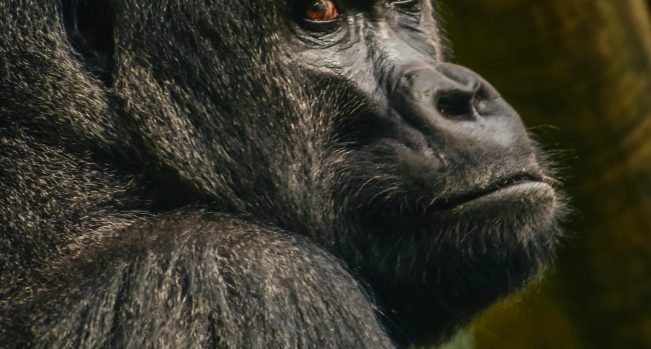The image of a gorilla typically conjures thoughts of a majestic creature adorned with thick, dark fur. However, the concept of a hairless gorilla challenges this familiar image, sparking curiosity and questions about its existence, characteristics, and conservation status. Let’s delve into the intriguing world of the hairless gorilla to uncover the truth behind this rare and lesser-known phenomenon.
Understanding the Hairless Gorilla
Contrary to popular belief, hairless gorillas do not constitute a separate species or subspecies. Instead, they are rare individuals within existing gorilla populations that exhibit partial or complete hair loss due to genetic mutations or health conditions. Here’s what sets them apart:
Causes of Hairlessness
Hair loss in gorillas can result from various factors:
Genetic Mutation: Some gorillas may inherit genes that disrupt normal hair growth patterns, leading to partial or complete baldness.
Health Issues: Skin conditions, infections, or diseases can affect gorillas, causing them to lose their hair over time.
Aging: Like humans, gorillas may experience hair thinning or loss as they age, though this is less common in healthy individuals.
Appearance and Physical Characteristics
Hairless gorillas often exhibit distinctive physical traits:
Smooth Skin: Their skin may appear smooth and shiny in areas where hair would typically grow.
Vulnerability: Without fur for insulation and protection, hairless gorillas may be more susceptible to temperature changes and skin-related issues.
Behavior and Adaptation
Despite their unique appearance, hairless gorillas behave similarly to their furry counterparts:
Social Structure: They live in family groups led by dominant silverback males, maintaining typical gorilla behaviors such as grooming, foraging, and communication.
Adaptation: Hairless gorillas may adapt to their environment differently, relying on other physical adaptations and behaviors to compensate for their lack of fur.
Conservation and Protection
Hairless gorillas, being rare and potentially vulnerable, face conservation challenges:
Protection: Conservation efforts aim to protect all gorilla populations, including rare individuals like hairless gorillas, from threats such as habitat loss, poaching, and disease.
Research: Studying hairless gorillas provides insights into genetics, health, and evolutionary biology, contributing to broader conservation strategies.
Conclusion
The existence of hairless gorillas highlights the complexity and diversity within gorilla populations. While they are not a distinct species, these rare individuals offer a glimpse into the natural variability of gorillas and underscore the importance of conservation efforts. By understanding and protecting gorillas, including those with unique traits like hairlessness, we ensure a future where these incredible animals continue to thrive in their natural habitats.



